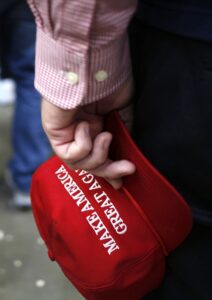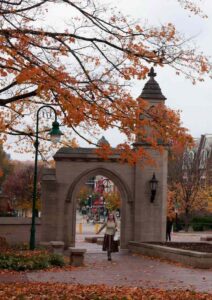May 20, 2025
Why Texas Universities’ Drag Bans Backfired
By Phoebe Grandi
The University of Texas and Texas A&M systems attempted to ban university-sponsored drag performances—but not without dissent from students and local organizers.

The first time River Perrill saw a drag performance in person was inside the lobby of Jester Center, a lively 24-floor dormitory complex at the University of Texas, Austin. “It was a surprise,” said Perrill, who was in the auditorium playing a trivia game when drag queens rushed in, handing out flyers about a show happening right outside the doors. “I was like, ‘Oh my God, this is exciting.’”
Perrill, a student from Houston, had an interest in drag from an early age. “Really, it was seeing RuPaul’s Drag Race—that seems like a lot of our generation’s first introduction. I just fell in love,” they said, adding that seeing the art form onscreen was particularly formative as they were first coming out in sixth grade. “I always did [drag] in my bedroom,” Perrill said. In 2020, Perrill began to experiment with makeup and, by the end of that year, got their first wig for Christmas.
But it wasn’t until they came to Austin in 2022 that they felt emboldened to express it more publicly. “Seeing it live was like, ‘Oh I could go on stage or I could perform in front of people.’” And in April of last year, Perrill made her performance debut as Rio Grande at “Big Tits, Bigger Dreams,” an open-mic night at a local gay club, Cheer Up Charlies, hosted by Brigitte Bandit, a beloved Austin drag queen known for her organizing around political education and the Texas legislature.


